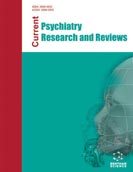Abstract
The coronavirus pandemic of 2019 has resulted in extensive social regulations and affected many aspects of life. It has led to significant stress and adversely impacted mental health across the globe. The virus has been found to directly increase neuropsychiatric sequelae in those affected. Various psychosocial factors have also increased the incidence and prevalence of mental health problems worldwide. There was a need for a ramp-up of psychiatric services to support individuals in such a situation. Even after the pandemic, there is a need for improving access to mental health services for the mentally ill as well as those affected by the regulations brought about to tackle the pandemic. Telepsychiatric services are in place throughout the world in different forms and are the answer to bridging the mental health gap during and in the aftermath of the pandemic. Hence, it is important to continue developing and enhancing tele psychiatric services in different countries for supporting and treating individuals affected by the pandemic.
Keywords: COVID-19, stress, telepsychiatry, psychological impact, telemedicine
Graphical Abstract
[http://dx.doi.org/10.1192/bjo.2020.79] [PMID: 32799958]
[http://dx.doi.org/10.1016/S2215-0366(20)30141-3] [PMID: 32353269]
[http://dx.doi.org/10.1016/j.psychres.2020.113076]
[http://dx.doi.org/10.1016/j.jtumed.2021.04.010] [PMID: 34121981]
[http://dx.doi.org/10.3389/fpsyt.2020.589614] [PMID: 33551864]
[PMID: 34425066]
[http://dx.doi.org/10.3389/fpubh.2021.750529] [PMID: 34778184]
[http://dx.doi.org/10.1186/s12889-020-10070-3] [PMID: 33422039]
[http://dx.doi.org/10.1159/000507639] [PMID: 32272480]
[http://dx.doi.org/10.1136/bmj.m1379] [PMID: 32253182]
[http://dx.doi.org/10.1016/j.bbi.2020.04.062]
[http://dx.doi.org/10.1016/j.ajp.2020.102071] [PMID: 32334407]
[http://dx.doi.org/10.1177/00332941211040437] [PMID: 34412543]
[http://dx.doi.org/10.3389/fpsyg.2020.567345] [PMID: 33192848]
[http://dx.doi.org/10.3892/etm.2022.11290] [PMID: 35493431]
[http://dx.doi.org/10.1016/S2215-0366(20)30203-0] [PMID: 32437679]
[PMID: 32485289]
[http://dx.doi.org/10.1183/13993003.04364-2020] [PMID: 33795319]
[http://dx.doi.org/10.4258/hir.2015.21.4.213] [PMID: 26618026]
[http://dx.doi.org/10.4103/0253-7176.207329] [PMID: 28615754]
[http://dx.doi.org/10.1016/j.sintl.2021.100117] [PMID: 34806053]
[http://dx.doi.org/10.1002/wps.20025] [PMID: 23471809]
[http://dx.doi.org/10.4103/0970-258X.258220] [PMID: 31134926]
[http://dx.doi.org/10.1007/s11920-012-0267-x] [PMID: 22467357]
[http://dx.doi.org/10.1258/135763307781458949] [PMID: 17697507]
[http://dx.doi.org/10.1007/s10916-020-01596-5] [PMID: 32542571]
[http://dx.doi.org/10.1176/appi.ps.54.7.976] [PMID: 12851433]
[http://dx.doi.org/10.5498/wjp.v5.i3.286]
[http://dx.doi.org/10.1176/ps.2007.58.6.836] [PMID: 17535945]
[http://dx.doi.org/10.1089/tmj.2014.0165] [PMID: 25885491]
[http://dx.doi.org/10.1017/S1355617703930128] [PMID: 12666771]
[http://dx.doi.org/10.1089/tmj.2010.0144] [PMID: 21443440]
[http://dx.doi.org/10.2196/19198] [PMID: 32755896]
[http://dx.doi.org/10.1177/1357633X17734239] [PMID: 28980853]
[http://dx.doi.org/10.1001/jamainternmed.2018.1314] [PMID: 29710200]
[http://dx.doi.org/10.1177/0253717620963274] [PMID: 33354072]
[http://dx.doi.org/10.1176/appi.ps.201700017] [PMID: 28859581]
[http://dx.doi.org/10.1177/0098858820933497] [PMID: 32659190]
[http://dx.doi.org/10.1177/0253717620960407] [PMID: 33354069]
[http://dx.doi.org/10.1186/s13584-021-00465-x] [PMID: 33941268]










